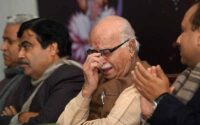JUDICIAL CORRUPTION IN INDIA
This article is written by Robin Kumar Thakur of Chanakya National Law University.
“Out of the last 16 to 17 Chief Justices, half have been corrupt.”
– Legal Activist And Supreme Court Lawyer Prashant Bhushan (2009)
Echoed by Shanti Bhushan, Law Minister (2010)
Corruption happens to be one of the main parasites degrading the social fabric of India, and it has not gone easy on the judiciary either. The judiciary enjoys the highest place among the trinity in public conscience and confidence and if charges of corruption are labelled against it the last bastion of public hope in government also falls. The corruption charges against the Judiciary results in public mistrust which is very fatal as public faith is the sine qua non for the smooth functioning of Judiciary.
HISTORY OF JUDICIAL CORRUPTION IN INDIA
The history of judicial corruption in independent India dates back even before the constitution was drafted, such as in the case of Justice SP Sinha of the Allahabad High Court who was charged with improper exercise of judicial functions along with lowering the dignity of his office and undermining the public trust in the judiciary. He was removed under the Government of India Act, 1935.
Other cases such as Justice V Ramaswami (found guilty for charges relating to gross abuse of his financial and administrative powers as the Chief Justice of the Punjab and Haryana High Court and criminal misappropriation of property), Justice Soumitra Sen of the Calcutta High Court (found guilty for misappropriation of large sums of money in her capacity as the receiver appointed by the High Court of Calcutta and misrepresentation of facts with regard to this misappropriation of money before the High Court of Calcutta), Justice Karnan (charged with contempt of court).
REASONS BEHIND JUDICIAL CORRUPTION IN INDIA
Contempt Of Court Act: This Act brushes aside any possibility of critical criticism of the judiciary, suppressing public criticism of all kinds and taking away any system of check and balances for the conduct of the judiciary.
Lack of transparency: The Indian judiciary does not fall under the ambit of the RIght to Information Act 2005, hence covering up for the lack of transparency and the ambiguity over almost every decision of the judiciary, sub-standardizing accountability and standards of the system.
Inaccessibility: The high cost of litigation, slow disposal of cases and English as the official court language expands the drastic gap between the privileged and non-privileged, inviting corruption as the party on the weaker side falls prey to the broken system in the somewhat alien land.
Weak Bar-Bench Relationship: The faith of the general public in the Indian Judiciary mainly depends on the cardial relation between the Judges and the Advocate. The weakening of the cardinal relationship between the Judges and the Advocates due to the mutual lack of trust and honour along with the ‘uncle judge syndrome’ demeans the justice delivery.
Weak Governments: The trinity of legislature, executive and the judiciary in the Indian system is a system of checks and balances. If one of them becomes weak the others become rather dictative. If one of them starts to enjoy tremendous powers without check from the other, instances of abuse of power will incur. If the judiciary becomes rather dictative in the presence of a weak legislature and executive, the scope of judicial corruption will increase as there are no checks on it.
WHY PEOPLE PATRONISE CORRUPTION IN JUDICIARY
The judges or administrator alone cannot be held accountable for the breakdown of the justice system; the approach of people towards this institution too, plays a major part, with people patronising corruption so that the results are favourable to them. The reasons behind this patronisation of corruption is:
Sped-up Judgements: One of the main reasons behind the patronization of corruption is the delay in justice delivery. In India, about 4.4 crore cases were pending as of 15th April 2021. The layman who has to also make their both ends meet find it very hard to cope with the dates of their case. This shortcoming of the system calls for corruption as a corrupt judge is more likely to give the judgement in no time.
Favourable Judgement: People with resources may offer and pay bribes to various officials of the justice delivery system including judges so that they can get a favourable judgement.
Lack of Stringent Laws: Laws like law of torts are uncodified and some rules and regulations like in bail are very basic. It depends upon the judges to deliver judgements in such cases. The possibility of influencing the judgement which entirely depends upon the discretion of the judge broadens the ambit of corruption.
SUGGESTIVE REFORMS
Increase In The Number Of Judges: The filling up of vacancies so as the judges are less burdened with the cases. It will also help in faster trial processes and judgements.
Court Record Management: The court record management should perform to its optimum which can only be achieved by updating it with modern technology. It will ensure real-time data of legal documents and cases along with transparency in the court proceedings.
Passing Of Judicial Standard And Accountability Bill: In 2010 a judicial standard and accountability bill was put on the table of Lok sabha by the ministry of law and justice which mandated the declaration of assets of the judges as well as their family members. It also laid down judicial standards to remove high court and supreme court judges. The Bill had provisions for the establishment of the National Judicial oversight Committee, the complaints scrutiny panel and an investigation committee. The Bill had provisions to empower the common man by giving them the right to complain about any judge. This bill at present, has not been passed.
Better Pay For The Judges: There are many instances where several legal luminaries do not want to become judges because of the lesser pay of judges as compared to that of the advocacy. Better pay will not only ensure that the judges are well qualified and learnt but will also ensure that the corruption decreases as financially strong judges are less likely to take bribes.
Annulment Of Contempt Of Court Act: The Contempt of Court Act should be revoked or it should be ensured that it is used in the rarest of the rare circumstances. It would ensure that the judiciary falls within the ambit of public criticism and its decisions can be questioned without a light of fear.
CONCLUSION
Judicial corruption is like a parasite for the judiciary. It does not only hamper the day to day proceedings of the judiciary but it also eats away the public trust and the reputation of the judiciary as the most reliable and clean of the trinity of the legislature, executive and the judiciary. The judiciary is still run by a system which is not efficient in modern days. The refusal of the judiciary to cope up with the modern advancements and the rampant corruption prevailing in the offices of the judges is degrading the system.
The Judges can only safeguard their titles of honourable or my lord if only they ensure that the public interests are safeguarded in a just manner. The judges are lawgivers and while pronouncing judgements should ensure that their hands are free of the blood of public goodwill and justice.
REFERENCES
Huchhanavar, Shivaraj. (2018). A Comparative Study of Regulatory Frameworks Combating Judicial Corruption and Judicial Misconduct in India and the United Kingdom.
Dr. Vinod Surana. (2020) “Corruption And Judiciary”
Impeachment of Judges – REFERENCE NOTE No. 32/RN/Ref./July/2018 LOK SABHA SECRETARIAT
Impeachment of Judges – REFERENCE NOTE No. 32/RN/Ref./July/2018 LOK SABHA SECRETARIAT
“Six corrupt CJIs named by Prashant Bhushan”.Prashant Bhushan canarytrap.in. 6 October 2010
“Shanti Bhushan makes news again”. Shanti Bhushan Bar & Bench. 11 November 2010.
Curated by Shivanshika Samaddar of National Law University Delhi.


